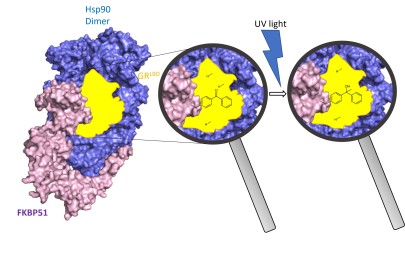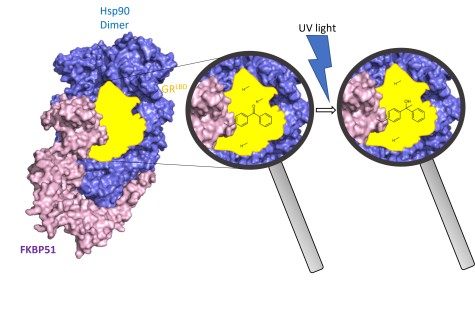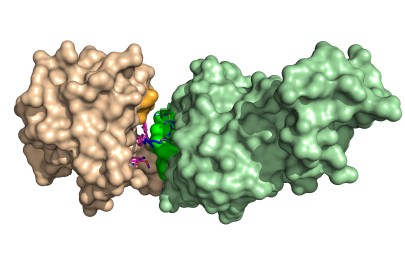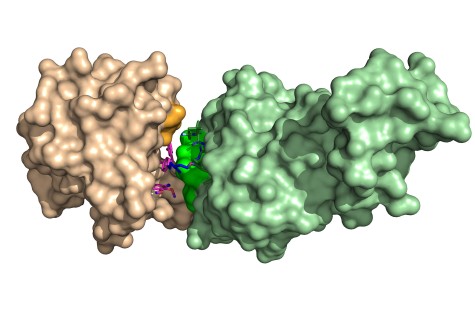In search of active substances against stress-related diseases
Researchers at TU Darmstadt present two new publications
2023/11/10
Depression, obesity or chronic pain – all of these disorders can be triggered or promoted by stress. In two recent publications in renowned scientific journals, researchers at TU Darmstadt show new ways of treating stress-related diseases.
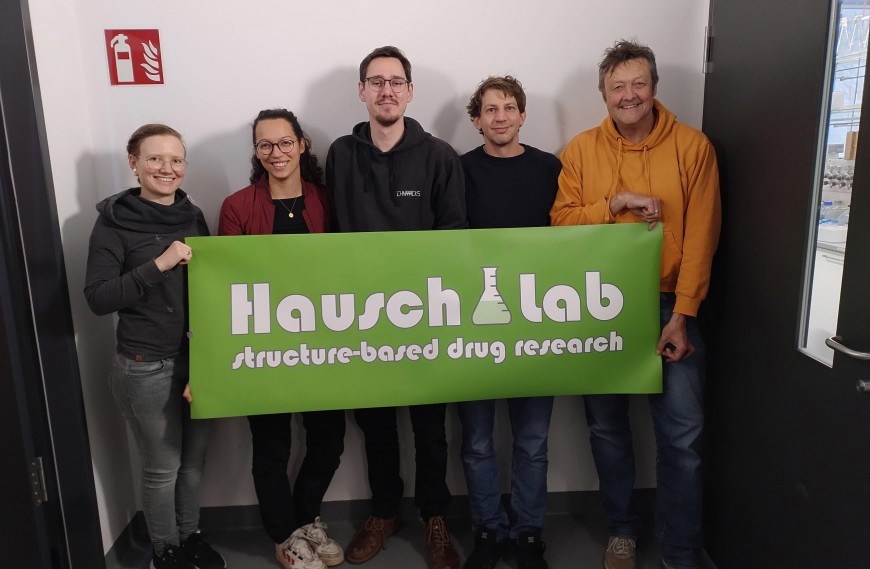
In a recent publication in in the journal “Nature Structural and Molecular Biology”, Felix Hausch and coworkers at the Department of Chemistry and the Centre for Synthetic Biology (research field Matter+Materials) at TU Darmstadt elucidated the architecture and functional mechanism of FKBP51 and FKBP52 in complex with the glucocorticoid receptor and the chaperone Hsp90, the protein that is necessary for the activation of the glucocorticoid receptor.
The two proteins control the steroid hormone receptors (for example the glucocorticoid receptor), which process among other things the body's stress and hormone signals. They are known play key roles in stress-related disorders and correct embryonic development, respectively. How FKBP51 and FKBP52 act on steroid hormone receptors is unknown.
“By systematic incorporation of photoreactive amino acids inside human cells we were able for the first time to map the intimate contacts of FKBP51 and FKBP52 with the glucocorticoid receptor inside living human cells”, explains Asat Baischew, who completed his doctorate in the Hausch group and is the first author of the publication. “This allowed us to reconstruct a snapshot of the glucocorticoid receptor prior to activation in the previously elusive step, where it is regulated by the FKBPs”, adds Sarah Engel, PhD student and key second author of the publication.
These studies show how FKBP51 and FKBP52 differentially interact with the glucocorticoid receptor, explain the differentiated pharmacology of FKBP51 ligands, and provide a structural basis for the development of FKBP-binding substances (ligands) ligands with higher efficacy. The findings open new avenues for the discovery of improved drugs for depression, obesity-induced diabetes, or chronic pain.
Protein FKBP51 in the focus of a second publication
A second recent publication by AG Hausch in the renowned journal “Angewandte Chemie” deals with the question of how these treatment options can be pursued in concrete terms. The researchers focused specifically on the protein FKBP51. However, recent biochemical findings have shown that currently available substances bind to FKBP51, but do not block its regulatory effect on stress hormone receptors.
Researchers at AG Hausch have now developed so-called PROTACs (Proteolysis Targeting Chimeras) for FKBP51. This makes it possible for the first time to pharmacologically degrade the complete FKBP51 protein in living human cells instead of only inhibiting parts of it, as it was previously the case. “FKBP51 turned out to be extremely resistant to induced protein degradation,” explains Thomas Geiger, PhD student and first author of the publication. “Unlike for the related smaller protein FKBP12, over 220 PROTAC variants had to be synthesized and tested before the molecule SelDeg51 was found that has sufficient activity and selectivity in cells.”
The study opens up a fundamentally new approach to target the molecular functions of FKBP51. The next steps, which are partially supported by the GOBio initial project MoProX, are to further develop these findings into improved medications for stress-related diseases.
Background
The research for the publication “Large-scale, in-cell photocrosslinking at single-residue resolution reveals the molecular basis for glucocorticoid receptor regulation by immunophilins” was partly funded by the TRABITA (Transient Binding Pockets for Drug Development) priority of the Hessian research funding program LOEWE.
The study “Discovery of a Potent PROTAC Enables Targeting of FKBP51's Scaffolding Functions” was partially funded by the PROXIDRUGS future cluster of the Federal Ministry of Education and Research.

